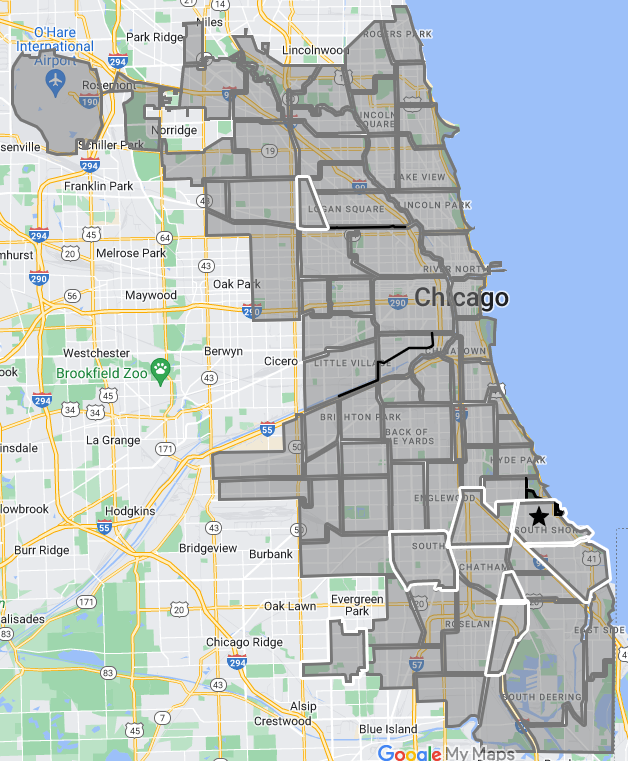In the last post we took an overall look at how neighborhoods grew, or not in 2022. There were 8 communities that did not see growth in 2021, but did see growth in 2022. This chart shows how each of those communities changed over the past two years

With an additional 43 units closed in 2022 over 2021 South Shore clearly saw the most growth. Lets see if we can figure out what is driving the growth in these neighborhoods? Are there big developments? Should we expect this growth to continue through 2023?

This is an image of an interactive map I’ve made on Google. The grey boundaries are each of the 77 communities in Chicago. The white boundaries are the neighborhoods on today’s list and the black markings are a few areas of interest that encourage development including the 606 trail and the Obama Library.
Except for Hermosa all of the neighborhoods that saw new growth in 2022 are in the south side. Hermosa is directly west of Logan Square and it sits at the west end of the 606 trail. The area of Logan Square includes the Bucktown neighborhood, which has been under heavy development and pushing west for decades. Here is an interesting article about the history of Bucktown.
On the Southside we can see Pullman and Burnside adjacent to each other. Pullman might have one of the richest histories of any neighborhood in Chicago. Here is a fascinating article about how it came to be and where it is heading. These two areas didn’t see wild growth in 2022, but it is a notable sign of the hard work and effort organizations like Chicago Neighborhood Initiatives has put into the area since it formed in 2010. Creating an emerging area from one that was stagnant as recently as the 1990s.
Mount Greenwood sits off on its own surrounded by suburbs, much like O’Hare. I’m not finding any major development happening there and there were only two additional closings YoY. Overall it looks like it’s been pretty steady over the past year.
The other four areas, South Chicago, South Shore, Greater Grand Crossing, and Auburn Gresham share borders moving south and west from the South Shore neighborhood; which had the greatest growth by far. Except for Greater Grand Crossing the other three are priority communities for the initial phase of Invest South/West, a community development initiative that has, since 2019, assisted in committing over $2.2B in investments in 10 community areas in the south and west sides. Disinvestment in these areas has been a concern since at least the 1970s. Here is an article I found from 1974 discussing the concerns of the day and ways in which the neighborhood could thrive.
It’s fascinating to see that even in the mid-70s people were talking about ways to grow these neighborhoods that align with the efforts that are being made today. The common understanding is when a neighborhood has gone stagnant it needs a significant investment to help draw more investments, which bring in jobs, amenities, and encourages residents to move in and stay. While they worked on this in the 1970s it continues to be a big effort. This is a great article that explains how residents are working together today, 50 years later, to bring the goals reported in the 1970s to fruition.


 Facebook
Facebook
 X
X
 Pinterest
Pinterest
 Copy Link
Copy Link